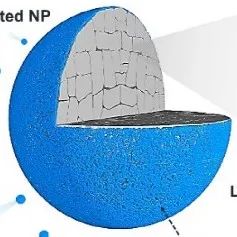
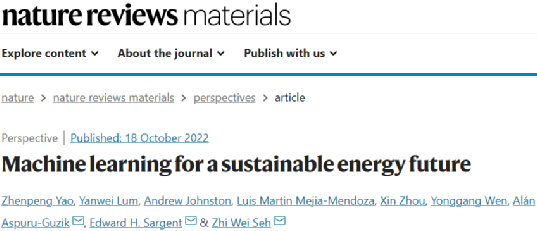 First Author: Zhenpeng YaoCorresponding Authors: Zhenpeng Yao, Yanwei Lum, Alán Aspuru-Guzik, Edward H. Sargent, Zhi Wei SehAffiliations: Shanghai Jiao Tong University, University of Toronto, A*STAR (Agency for Science, Technology and Research), Singapore【Research Highlights】Currently, the transition from fossil fuels to renewable energy has become a global challenge. To effectively collect, store, convert, and manage renewable energy, improvements are needed in materials, devices, and other areas. Some research has begun to integrate machine learning (ML) to further promote the development of renewable energy. Recently, Associate Professor Zhenpeng Yao from Shanghai Jiao Tong University and his team emphasized the latest advancements in ML-driven energy research, outlining the current and future challenges in this direction, and introducing how to best utilize ML technology. To compare the benefits of different ML-accelerated processes for energy research, the researchers presented a series of key performance indicators. In this work, the authors discuss and evaluate the latest advancements in applying ML to energy collection (photovoltaics), storage (batteries), conversion (electrocatalysis), and management (smart grids). They also predict potential research directions in the energy field that could further benefit from ML. The article titled “Machine learning for a sustainable energy future” was published in Nature Reviews Materials.【Main Content】Increasing the use of renewable energy, particularly solar and wind energy, is a viable way to mitigate the environmental issues caused by fossil fuels. However, the growing energy demand places higher demands on the development of renewable energy, necessitating an accelerated transition from fossil energy to sustainable energy. This requires energy technologies, infrastructure, and policies that can facilitate the collection, storage, conversion, and management of renewable energy.In sustainable energy research, it is essential to first select suitable candidate materials (such as photovoltaic materials) from the possible material combination space, and then synthesize and use them in devices (such as solar panels) with sufficiently high yield and quality. The discovery process for a representative material can take as long as 15–20 years, with considerable room for improvement. Additionally, the stability and reproducibility of devices must be ensured to integrate them into energy systems (such as solar power plants), and energy usage and generation patterns must also be managed.This paper investigates the extent to which machine learning (ML) technology can help address the aforementioned challenges in the sustainable energy field. ML models can predict specific properties of new materials without expensive characterization. ML can generate new material structures with desired properties. It can also be used to understand the usage and generation patterns of renewable energy. By optimizing energy management at both the device and grid levels, ML can inform energy policy.First, this paper introduces the Material Accelerated Development Performance Indicators (XPIs) to measure the effectiveness of accelerated energy material R&D platforms (Table 1).
First Author: Zhenpeng YaoCorresponding Authors: Zhenpeng Yao, Yanwei Lum, Alán Aspuru-Guzik, Edward H. Sargent, Zhi Wei SehAffiliations: Shanghai Jiao Tong University, University of Toronto, A*STAR (Agency for Science, Technology and Research), Singapore【Research Highlights】Currently, the transition from fossil fuels to renewable energy has become a global challenge. To effectively collect, store, convert, and manage renewable energy, improvements are needed in materials, devices, and other areas. Some research has begun to integrate machine learning (ML) to further promote the development of renewable energy. Recently, Associate Professor Zhenpeng Yao from Shanghai Jiao Tong University and his team emphasized the latest advancements in ML-driven energy research, outlining the current and future challenges in this direction, and introducing how to best utilize ML technology. To compare the benefits of different ML-accelerated processes for energy research, the researchers presented a series of key performance indicators. In this work, the authors discuss and evaluate the latest advancements in applying ML to energy collection (photovoltaics), storage (batteries), conversion (electrocatalysis), and management (smart grids). They also predict potential research directions in the energy field that could further benefit from ML. The article titled “Machine learning for a sustainable energy future” was published in Nature Reviews Materials.【Main Content】Increasing the use of renewable energy, particularly solar and wind energy, is a viable way to mitigate the environmental issues caused by fossil fuels. However, the growing energy demand places higher demands on the development of renewable energy, necessitating an accelerated transition from fossil energy to sustainable energy. This requires energy technologies, infrastructure, and policies that can facilitate the collection, storage, conversion, and management of renewable energy.In sustainable energy research, it is essential to first select suitable candidate materials (such as photovoltaic materials) from the possible material combination space, and then synthesize and use them in devices (such as solar panels) with sufficiently high yield and quality. The discovery process for a representative material can take as long as 15–20 years, with considerable room for improvement. Additionally, the stability and reproducibility of devices must be ensured to integrate them into energy systems (such as solar power plants), and energy usage and generation patterns must also be managed.This paper investigates the extent to which machine learning (ML) technology can help address the aforementioned challenges in the sustainable energy field. ML models can predict specific properties of new materials without expensive characterization. ML can generate new material structures with desired properties. It can also be used to understand the usage and generation patterns of renewable energy. By optimizing energy management at both the device and grid levels, ML can inform energy policy.First, this paper introduces the Material Accelerated Development Performance Indicators (XPIs) to measure the effectiveness of accelerated energy material R&D platforms (Table 1).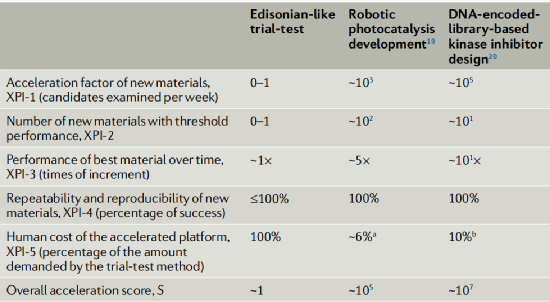 Table 1. Examples of evaluating typical material accelerated R&D platforms using XPIsNext, the authors discuss the closed-loop ML framework for material discovery. Traditional material discovery methods are Edison-style, relying on trial and error to develop materials with specific properties (Figure 1a), followed by synthesizing materials, testing properties, and establishing structure-property relationships to guide the next round of testing. This research cycle is long. High-throughput screening strategies (Figure 1b) accelerate the R&D process. Theoretical calculations are performed on candidate options, followed by experimental validation of the best-performing candidates. However, this is still very time-consuming and computationally expensive.ML can significantly increase the sampling space and conduct high-throughput virtual screening(Figure 1c). Further improvements include automated virtual screening methods (Figure 1d). This method can conduct targeted, automated searches in the chemical domain to discover ideal materials.
Table 1. Examples of evaluating typical material accelerated R&D platforms using XPIsNext, the authors discuss the closed-loop ML framework for material discovery. Traditional material discovery methods are Edison-style, relying on trial and error to develop materials with specific properties (Figure 1a), followed by synthesizing materials, testing properties, and establishing structure-property relationships to guide the next round of testing. This research cycle is long. High-throughput screening strategies (Figure 1b) accelerate the R&D process. Theoretical calculations are performed on candidate options, followed by experimental validation of the best-performing candidates. However, this is still very time-consuming and computationally expensive.ML can significantly increase the sampling space and conduct high-throughput virtual screening(Figure 1c). Further improvements include automated virtual screening methods (Figure 1d). This method can conduct targeted, automated searches in the chemical domain to discover ideal materials.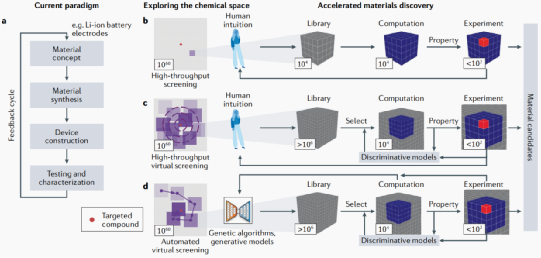 Figure 1. Traditional vs. accelerated material R&D methods. (a) Traditional Edison-style experimental methods, primarily based on trial and error. (b) High-throughput screening methods combining theory and experiment. (c) ML-driven methods that train an ML model using theoretical and experimental results to predict structure-property relationships. (d) ML-driven methods that predict performance and automatically explore, using optimized ML to solve inverse design problems.The authors review the latest advancements in applying ML to energy collection, storage, and conversion technologies, as well as integrating ML into smart grids (Figure 2).
Figure 1. Traditional vs. accelerated material R&D methods. (a) Traditional Edison-style experimental methods, primarily based on trial and error. (b) High-throughput screening methods combining theory and experiment. (c) ML-driven methods that train an ML model using theoretical and experimental results to predict structure-property relationships. (d) ML-driven methods that predict performance and automatically explore, using optimized ML to solve inverse design problems.The authors review the latest advancements in applying ML to energy collection, storage, and conversion technologies, as well as integrating ML into smart grids (Figure 2).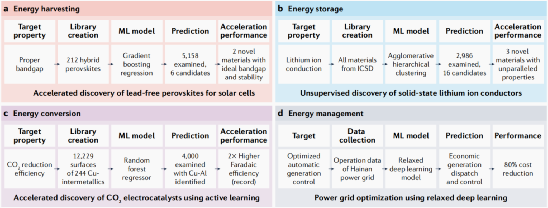 Figure 2. Examples of future applications of ML technology in the sustainable energy field. (a) Energy collection. (b) Energy storage. (c) Energy conversion. (d) Energy management.Other directions in the field of energy materials face similar material-related challenges (Figure 3), and ML will provide opportunities for substantial progress in these areas. Additionally, ML faces significant challenges in optimizing smart grids and policies.
Figure 2. Examples of future applications of ML technology in the sustainable energy field. (a) Energy collection. (b) Energy storage. (c) Energy conversion. (d) Energy management.Other directions in the field of energy materials face similar material-related challenges (Figure 3), and ML will provide opportunities for substantial progress in these areas. Additionally, ML faces significant challenges in optimizing smart grids and policies.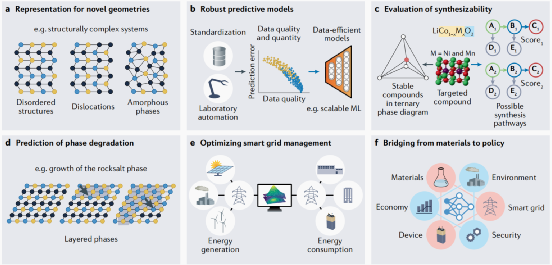 Figure 3. Areas where ML combined with renewable energy has development prospects. (a) The development of energy materials presents modeling challenges. Machine learning can help characterize complex structures, such as dislocations and amorphous phases. (b) Flexible models need to achieve effective scalability across different sizes of datasets, and ML can help develop predictive models. Yellow points represent cases where the predictive accuracy of ML models may be compromised when unreliable datasets are added. (c) Synthesis route prediction is a problem that needs to be addressed in new material design. In ternary phase diagrams, white points represent stable compounds in phase space, while red points represent target compounds. Two possible synthesis routes for a compound are compared. Scores can reflect the complexity and cost of synthesis paths. (d) Phase degradation predictions using ML. The shaded area represents the rock salt phase growing within the layered phase. Arrows indicate growth direction. (e) The use of ML helps optimize capacity and energy consumption. (f) Energy policy is the approach to addressing energy issues, including conversion, distribution, and utilization, where ML can be used to optimize the corresponding economy.【Significance Analysis】This article illustrates the significant potential of ML in the development of sustainable energy technologies by showcasing the latest advancements in the application of ML in the sustainable energy field. In recent years, ML has achieved remarkable success in many areas related to energy technology, from material design and device management to system deployment. The authors believe that ML is particularly well-suited for discovering new materials, and researchers hope to leverage ML to discover revolutionary new materials for the energy industry. The field of ML is still rapidly evolving, with new methods being reported daily. Developing and adopting these methods to address specific problems in materials science will take time. Furthermore, the authors believe that to truly accelerate the deployment of sustainable energy, ML should be applied as a tool similar to synthetic procedures, characterization devices, or control devices in research. To this end, the authors propose a series of Material Accelerated Development Performance Indicators (XPIs) and suggest some directions for research that hope to integrate ML. This work provides a forward-looking direction for the relevant driving role of machine learning in energy materials, devices, management, and more.【Reference Information】Zhenpeng Yao, Yanwei Lum, Andrew Johnston et al. Machine learning for a sustainable energy future. Nature Reviews Materials. (2022).https://doi.org/10.1038/s41578-022-00490-5
Figure 3. Areas where ML combined with renewable energy has development prospects. (a) The development of energy materials presents modeling challenges. Machine learning can help characterize complex structures, such as dislocations and amorphous phases. (b) Flexible models need to achieve effective scalability across different sizes of datasets, and ML can help develop predictive models. Yellow points represent cases where the predictive accuracy of ML models may be compromised when unreliable datasets are added. (c) Synthesis route prediction is a problem that needs to be addressed in new material design. In ternary phase diagrams, white points represent stable compounds in phase space, while red points represent target compounds. Two possible synthesis routes for a compound are compared. Scores can reflect the complexity and cost of synthesis paths. (d) Phase degradation predictions using ML. The shaded area represents the rock salt phase growing within the layered phase. Arrows indicate growth direction. (e) The use of ML helps optimize capacity and energy consumption. (f) Energy policy is the approach to addressing energy issues, including conversion, distribution, and utilization, where ML can be used to optimize the corresponding economy.【Significance Analysis】This article illustrates the significant potential of ML in the development of sustainable energy technologies by showcasing the latest advancements in the application of ML in the sustainable energy field. In recent years, ML has achieved remarkable success in many areas related to energy technology, from material design and device management to system deployment. The authors believe that ML is particularly well-suited for discovering new materials, and researchers hope to leverage ML to discover revolutionary new materials for the energy industry. The field of ML is still rapidly evolving, with new methods being reported daily. Developing and adopting these methods to address specific problems in materials science will take time. Furthermore, the authors believe that to truly accelerate the deployment of sustainable energy, ML should be applied as a tool similar to synthetic procedures, characterization devices, or control devices in research. To this end, the authors propose a series of Material Accelerated Development Performance Indicators (XPIs) and suggest some directions for research that hope to integrate ML. This work provides a forward-looking direction for the relevant driving role of machine learning in energy materials, devices, management, and more.【Reference Information】Zhenpeng Yao, Yanwei Lum, Andrew Johnston et al. Machine learning for a sustainable energy future. Nature Reviews Materials. (2022).https://doi.org/10.1038/s41578-022-00490-5
Zhejiang University, Lu Jun & Wu Tianpin, Major Nature: Stability of Perovskite Phase High Nickel Cathodes
2022-11-03

Tsinghua/Beijing Institute of Technology Adv. Mater.: Regulating Solvent-Solute Interactions to Accelerate Low-Temperature Lithium Metal Battery Interface Kinetics
2022-11-03
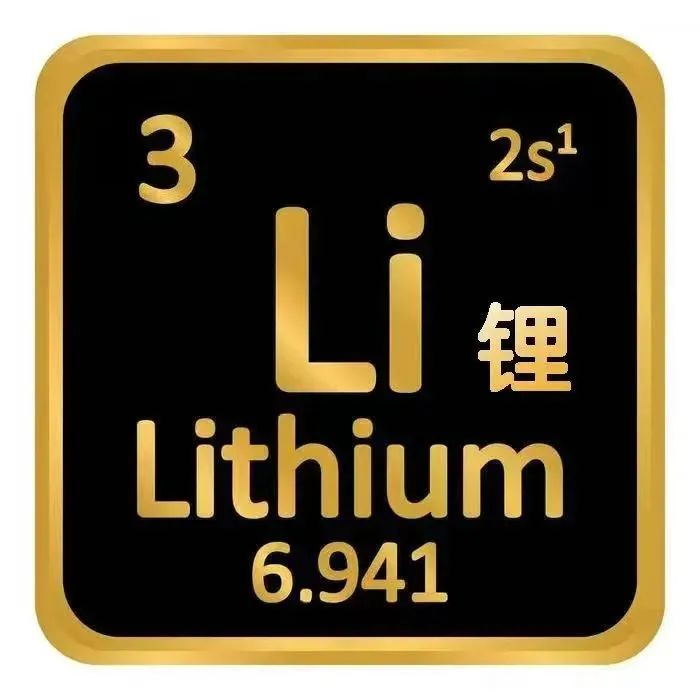
Professor Qiao Shizhang Angew: Revealing the Mechanism of Sulfur Reduction Catalysts and Solvents to Enhance the Performance of Lithium-Sulfur Batteries under Poor Electrolyte Conditions
2022-11-03

High Sulfur Loading Atomic-Level Dispersion of Dual-Site Sulfur Cathode Materials for Room Temperature Sodium-Sulfur Batteries
2022-11-03

Smart Current Collectors Achieve High Energy Density and High Electrochromic Contrast for Smart Wearable Power Applications
2022-11-03

Jianghan University Li Yuyu/Clarifying Appl.Surf.Sci: Precise Nanofilm Coating and Doping Techniques for Synergistic Optimization of High Voltage Single Crystal NCM523 Surface Interfaces
2022-11-03

Institute of Physics Wu Fan/Li Hong/Chen Liquan: High Safety, Wide Temperature Range, Micro External Pressure, Dendrite-Free Sulfide-Based Lithium Batteries
2022-11-02
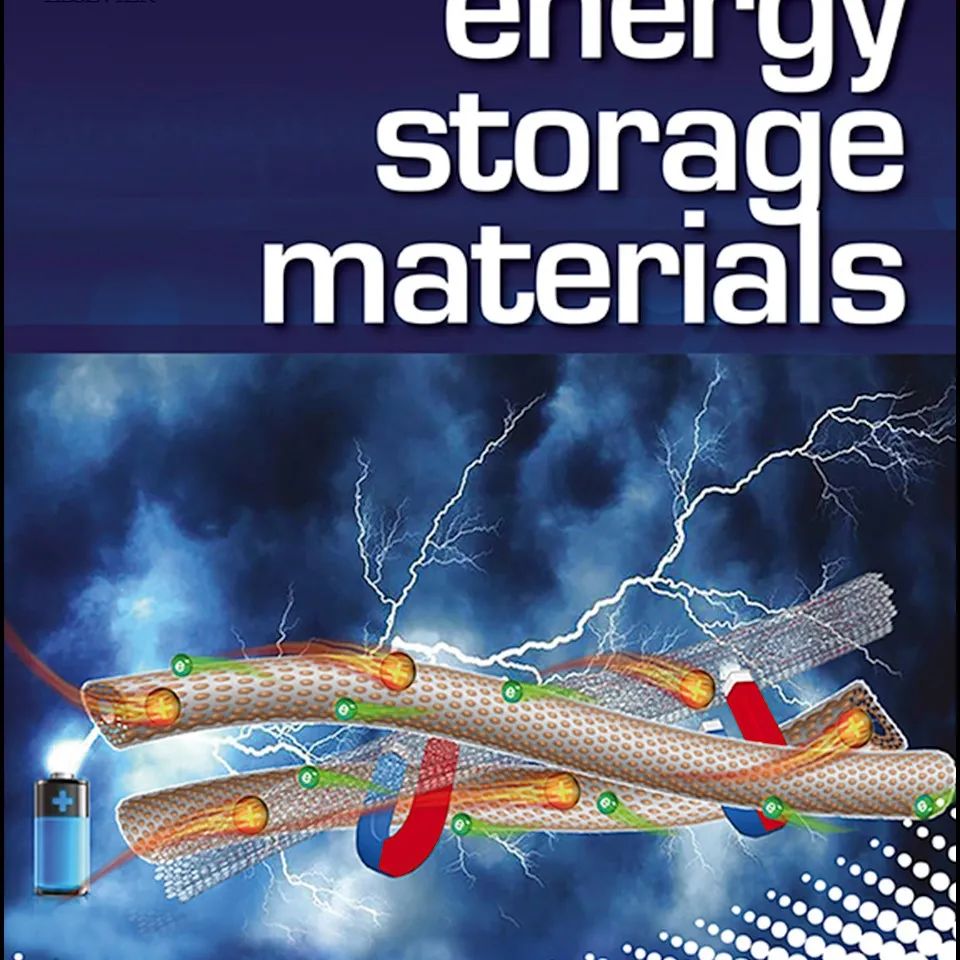
In-Depth Study of Mass Transfer Processes of Lithium Metal during Electrodeposition and Dissolution in High Concentration Electrolytes
2022-11-02

Southeast University Hu Linfeng Angew.: New Type of Planar π-Conjugated Quinone Polymers with Ultra-Fast Zinc Ion Diffusion Dynamics
2022-11-02
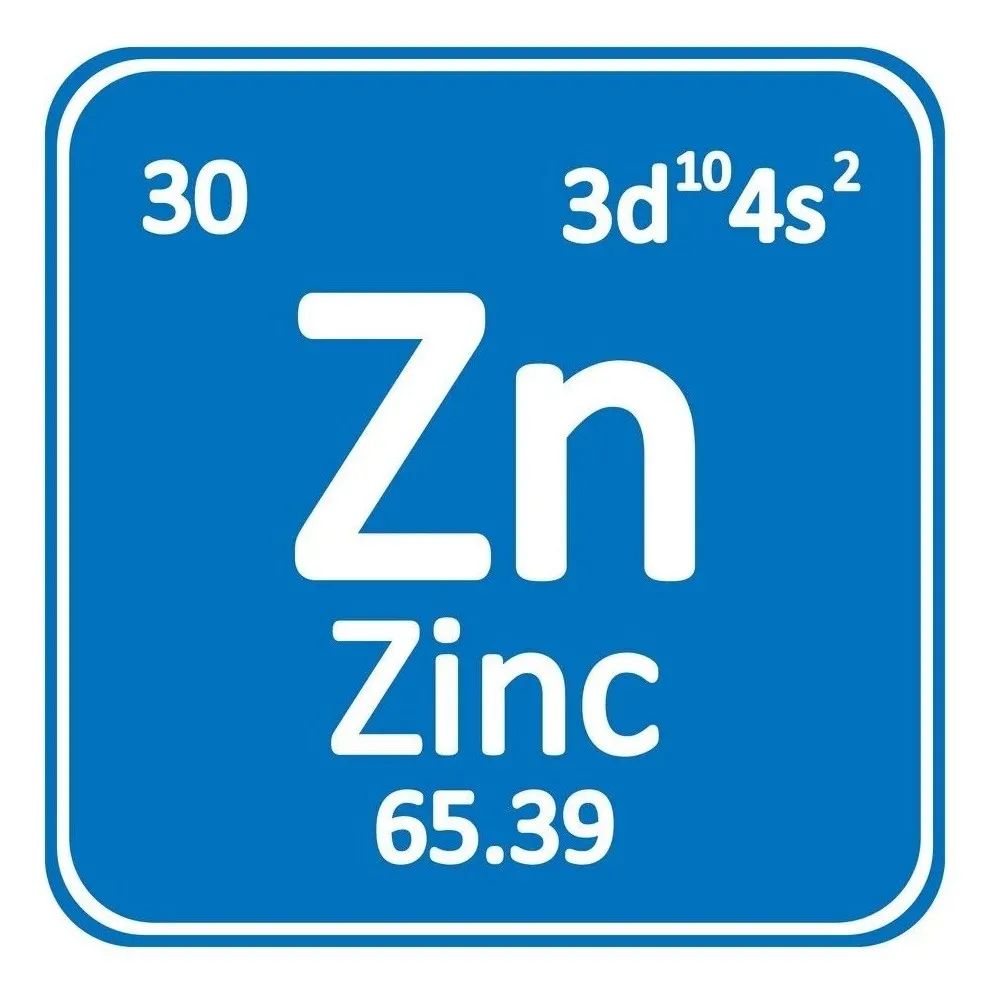
Karlsruhe Institute of Technology, Germany, Ma Yuan Research Team ACS Nano: New Nanoparticle Coating Technology to Enhance All-Solid-State Battery Performance
2022-11-02
